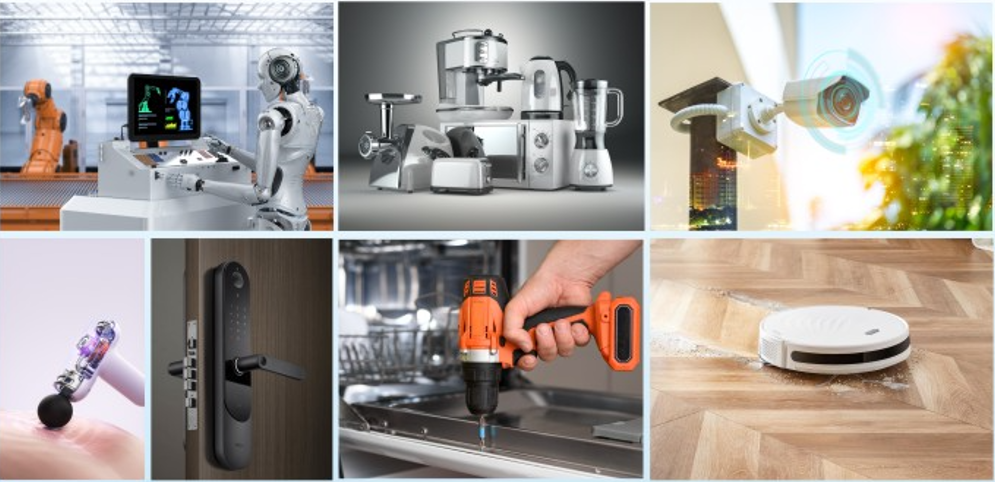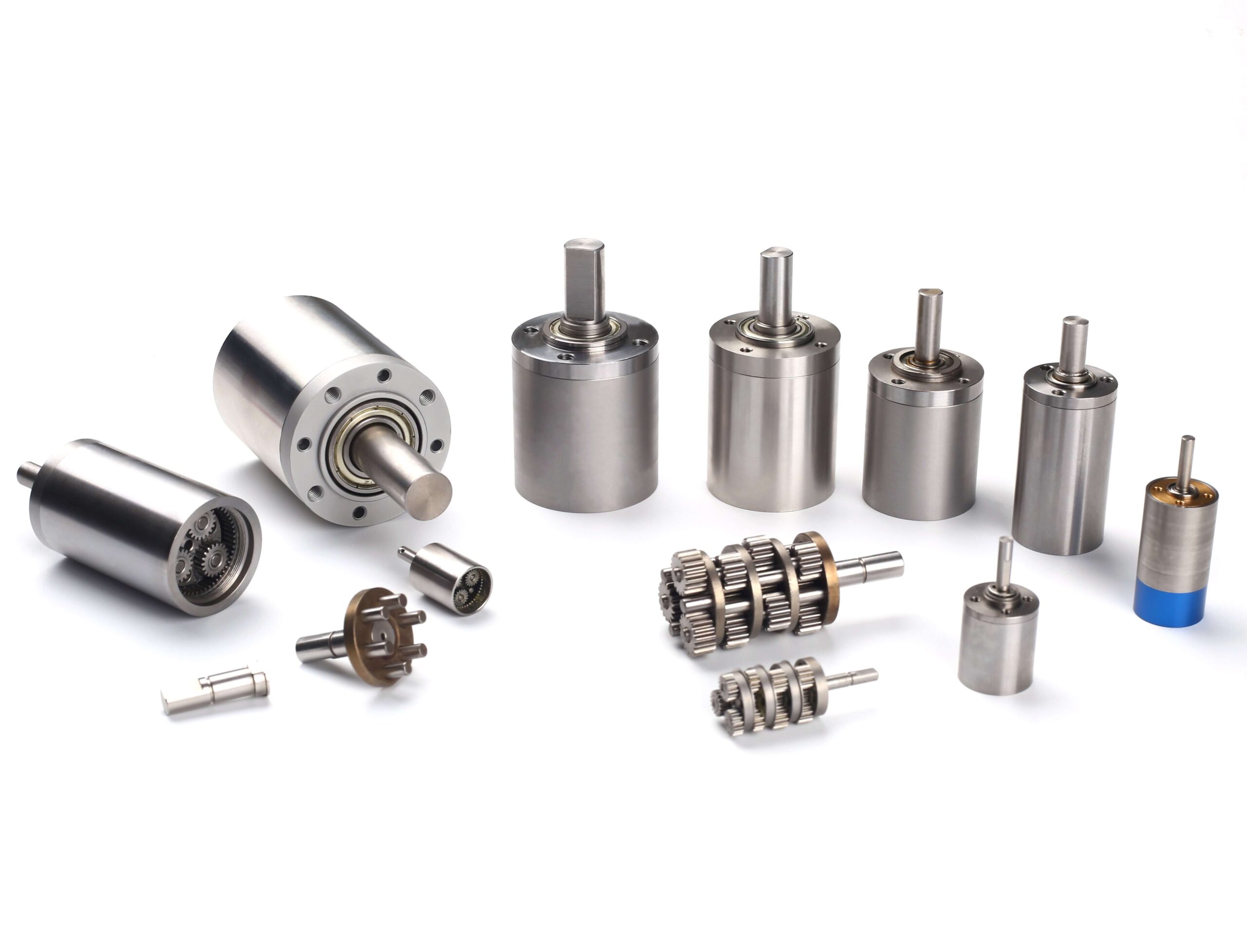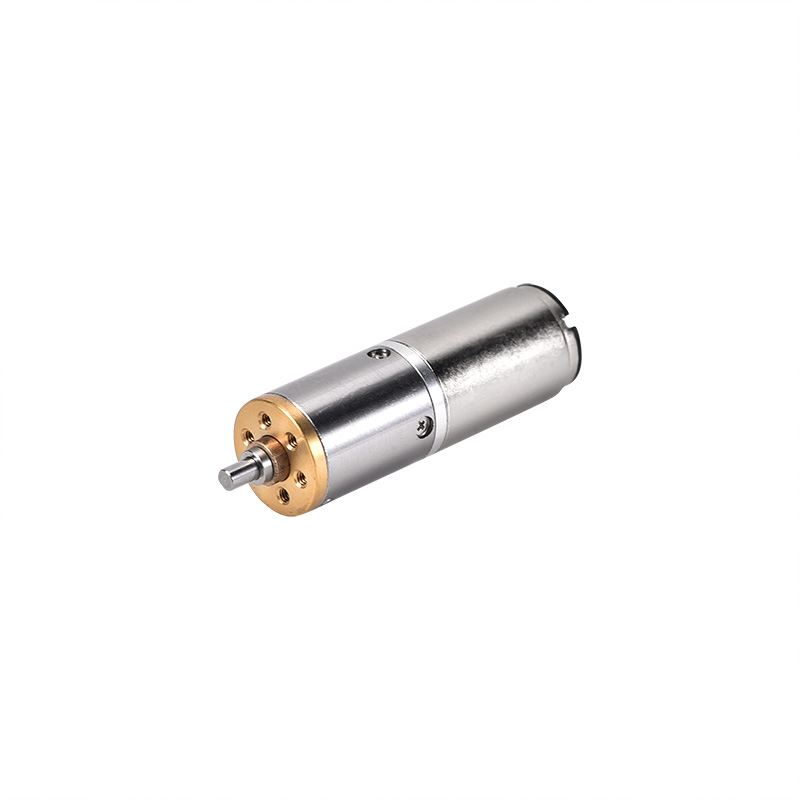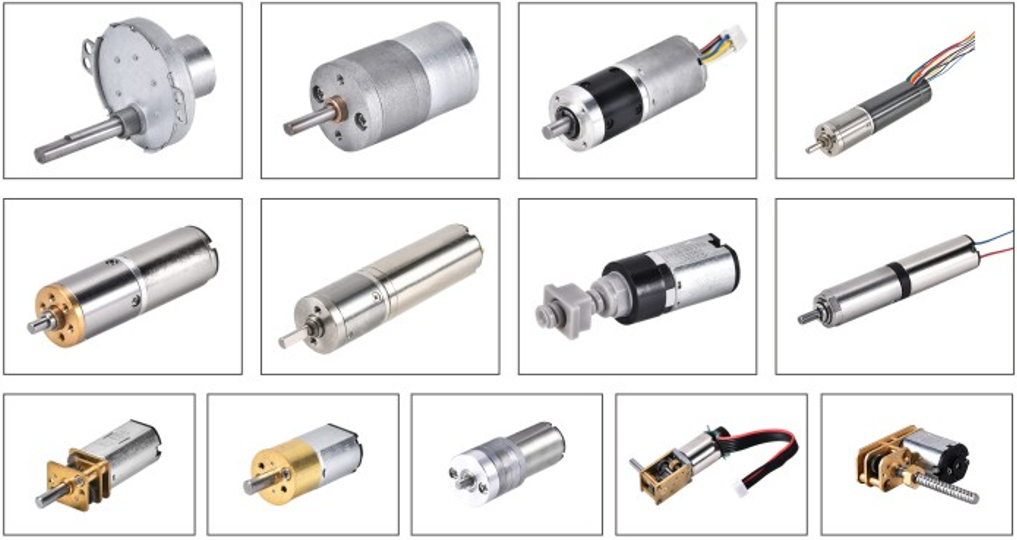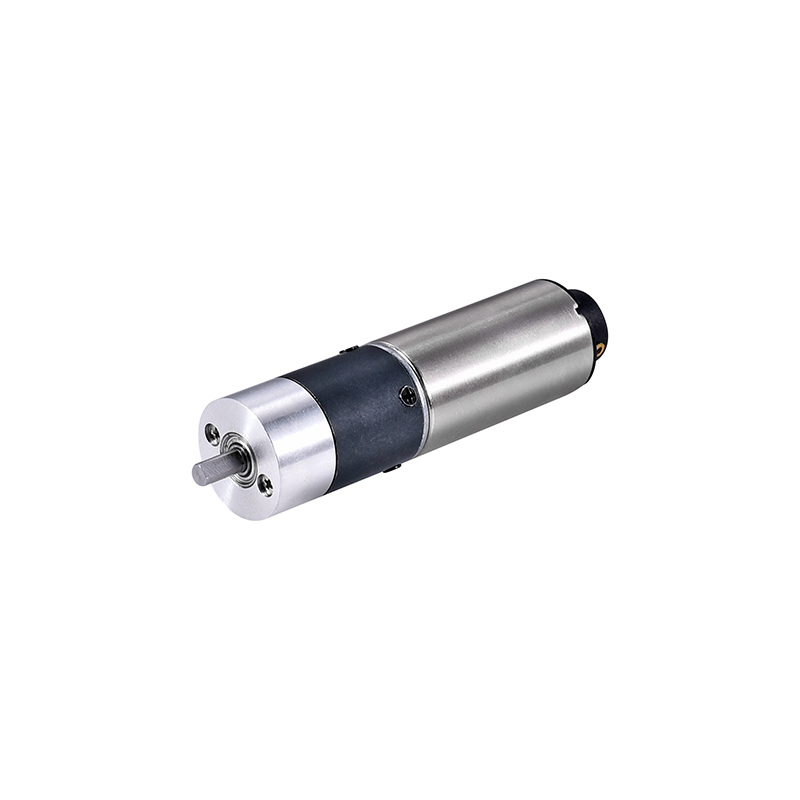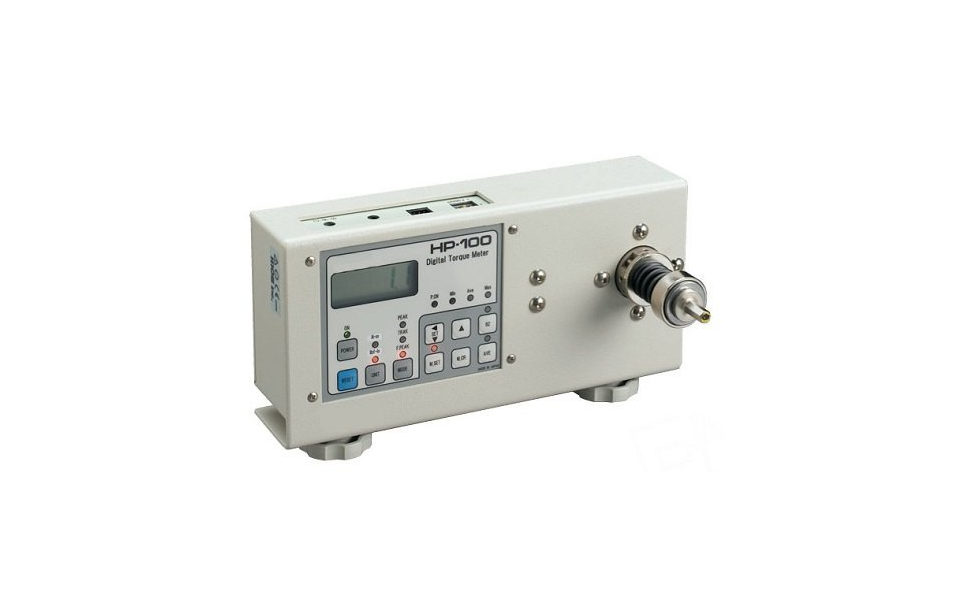A surgical robot needs robotics motors to move exactly in the operating room. Robotics motors change electrical energy into controlled movement. This helps the robot be accurate and reliable. More than 90% of robots in factories use robot motors for precision. This shows how important they are in advanced robotics. Motors like servo and stepper types help robots do tasks the same way every time. In making medical devices, robot motors can move very tiny amounts. This proves they are needed for precision jobs. Without the right motor, robots cannot move steadily or do the same thing again and again.
Principales conclusiones
Robotics motors help robots move in the right way. They let robots do the same job many times without mistakes. This is very important in surgery and making things in factories.
There are different kinds of motors like servo, stepper, and brushless DC motors. Each type helps with things like being exact, moving fast, or having good control. The best motor depends on what the robot needs to do.
Feedback systems and smart control ways help motors change how they move right away. This keeps robots steady and lets them work with care.
Picking good motors and using them with sensors and controllers makes robots work better. It also helps robots last longer and not break as much.
Robotics motors help robots work faster and safer. They also help robots make less waste. This makes robotics motors very important for smart and careful machines in the future.
Robotics Motors and Precision
Accuracy and Repeatability
Robot motors are very important for accuracy and repeatability. These are needed because robots do the same job many times. Robots must not make mistakes. In factories, robots put parts in the same place every time. In surgery, robots must move very carefully to avoid errors. Robot motors like brushless dc motors, stepper motors, and servo motors help control movement exactly.
Advanced sensors, such as encoders and resolvers, help with position and speed control. These sensors check where the robot motor is and how fast it moves. The robot uses this data to fix its movement and stay accurate. Encoders can measure very tiny distances. This is needed for jobs like handling semiconductor wafers and micro-assembly. Repeatability means the robot goes back to the same spot each time. This depends on the robot motor, control system, and sensors. Some companies use special encoders, like Renishaw’s AksIM-2 and ATOM, for great repeatability.
Robot motors also use smart control methods, like field-oriented control and model predictive control. These help the motor change when the load changes and lower mistakes. Field-oriented control lets the robot adjust torque and speed for better accuracy. Good motors, sensors, and control systems help robots work with high accuracy and repeatability.
Note: Checking and fixing robot motors and sensors often helps keep them accurate and repeatable.
Motion Control and Stability
Robots need stable motion, which is why robotics motors matter. Robots must move smoothly and stop in the right place. Motors with closed-loop control use feedback from sensors to check and change how they work. This feedback helps the motor lower shaking and keep things smooth. Closed-loop control lets robots switch between modes, so they do not lose sync or shake when stopped.
Encoders are important for motion control and stability. Incremental encoders send signals to track position and speed. Absolute encoders give a special value for each spot, so robots always know their place, even after power loss. Magnetic encoders work in tough places. Optical encoders give better detail for more accuracy. The encoder you pick changes how steady and accurate the robot moves.
Smart control methods, like field-oriented control, help motion control even more. These let robots change how fast they speed up or slow down, which lowers noise and shaking. High torque at low speeds helps robots react fast and move exactly, which is key for robotic arms and machines. Closed-loop stepping motors are more reliable and work better, so they are good for jobs that need steady and accurate moves.
Main reasons robot motors help with motion control and stability:
Feedback from encoders and sensors in real time
Smart control methods like field-oriented control
Closed-loop systems that lower shaking and work better
Good motors made for smooth moves
Robotics motors are needed because they help robots move with precision, stay steady, and repeat tasks in all advanced robotics.
Types of Robot Motors
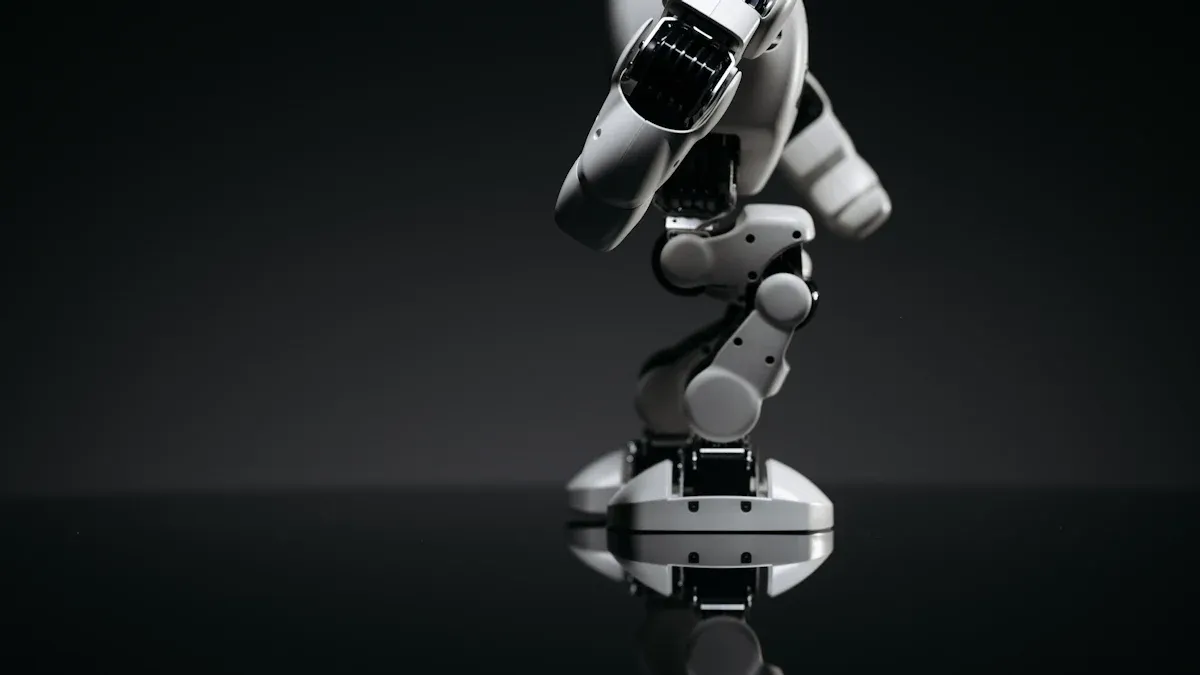
Robot motors are very important for robots to move well. Each motor type helps robots move, be accurate, and work better. Picking the right motor helps robots do hard jobs with high precision.
Tipo de motor | Accuracy & Control | Características del par | Speed & Noise | Aplicaciones típicas |
|---|---|---|---|---|
Servomotores | High accuracy with feedback control; precise angular positioning | High torque at high speeds; maintains dynamic load variations | Suitable for high-speed; reliable and stable power output | Robotic arms for precise joint control, welding, painting, palletizing |
Motores paso a paso | High accuracy with open-loop control; fixed step angles | High torque at low speeds; holds position steadily | Low top speed; noisy and can overheat under continuous max current | 3D printers, CNC machines, robotic arms for low-speed precision tasks |
Motores de corriente continua sin escobillas (BLDC) | Moderate to high accuracy; smooth operation with electronic commutation | High torque at low speeds; efficient with low friction and heat | High maximum speed (thousands to tens of thousands rpm); low noise | Drones, ground robots, continuous-use robots requiring smooth fast motion |
Servo Motors for Precision
Servo motors are great for robots that need to be exact. They use feedback systems like encoders to check their position and speed. The robot gets updates all the time. This helps the motor change quickly and stay in place. The feedback loop makes sure the robot moves the same way every time. This is important for jobs like welding or surgery.
Reasons servo motors are good for precision:
They can repeat the same move almost perfectly.
The motor only goes as fast as needed, so it is smooth.
Servo motors are small, strong, and easy to use.
Field-oriented control and high-resolution encoders help make tiny changes.
Servo motors also use smart controllers. These controllers help with power, current, and control. This lets robots stay accurate, even if the load changes fast.
Stepper Motors in Robotics
Stepper motors work in a different way. They move in steps, so the robot knows where it is. This means no extra sensors are needed. It makes things simpler and cheaper. Stepper motors are very accurate at slow speeds. They can hold their spot well. This is good for 3D printers, CNC machines, and robotic arms.
Why stepper motors help with precision:
They let robots control position, speed, and acceleration.
Microstepping makes the moves smoother and less shaky.
The motor’s steps help robots do the same job again and again.
Stepper motors use driver circuits and microcontrollers. These help send the right signals to the motor. Microstepping and good drivers make the motor work better and more accurately.
DC Motors and Control
DC motors are important because they can change speed and torque easily. Old DC motors do not have feedback, but new ones use encoders or Hall sensors. These sensors check speed and position. This helps the robot make changes right away for better control.
Main ways to control DC motors in robots:
Closed-loop feedback, like PID control, keeps things accurate.
Pulse Width Modulation (PWM) changes voltage to save energy and lower heat.
Smart algorithms, like field-oriented control, help when loads change.
DC motors are efficient, especially brushless ones. They give high torque at low speeds and are quiet. They last a long time. Robots use DC motors for steady movement and quick response. Good control and design make DC motors important for precision in robots.
Tip: Pick a robot motor with feedback and smart control. This helps the robot be accurate, efficient, and reliable in every job.
Precision in Robotics Applications
Automatización industrial
Industrial automation uses robot motors for accurate and steady work. Robotic arms and multi-axis systems use servo motors. These motors help with hard moves that need to work together. Stepper motors are also important for jobs that need careful control. Robots use these motors to move parts and run conveyor belts. They help robots put things in the right place. Robot motors make sure every move is smooth and can be done again. They also help robots make fewer mistakes and need less fixing.
Tipo de motor | Performance Impact | Reliability Impact |
|---|---|---|
Brushed DC | Easy to use, not expensive | Needs more fixing, does not last as long |
Brushless DC | Works well, not loud | Needs less fixing, lasts longer |
Stepper | Good at slow, careful moves | Works well for easy jobs |
Servo | Very careful moves, can do hard jobs | Very steady, but more parts to manage |
New motor drivers and 48 V systems make robots safer and better. Robot motors help factories do very careful and fast work.
Medical and Surgical Robotics
Medical robots need motors that move smoothly and carefully. These motors must be very exact. Special brushless DC motors and slotless types stop jerky moves. Magnetic encoders give feedback right away, so moves are more correct. Motors that are small and light fit into tiny tools and react fast.
Robotic arms in surgery can move better than a human hand.
The surgeon’s moves are copied by the robot for exact actions.
3D views and steady robot moves help keep patients safe.
Robot motors stop shaking and let doctors make smaller cuts, so people heal faster.
These things show why robot motors are needed for safe and steady medical robots.
Laboratory and Micro-Assembly
Lab robots and micro-assembly need motors that move very exactly. Some jobs need moves as small as 40 nanometers. Motors work with cameras and servo systems to line up tiny parts. Robots can handle small things that people cannot. Special actuators and micro tweezers use robot motors for hard assembly steps.
Motors help robots put and line up tiny parts just right.
Force feedback and lasers check if moves are correct.
Robots can put together parts as small as 10 microns, which helps in making things for science and medicine.
Robot motors let lab and micro-assembly robots do careful, steady work for tough jobs.
Selecting Motors for Precision
Control and Feedback
Picking the right robot motors starts with control and feedback. Robots need good control to move accurately every time. Closed-loop feedback systems use sensors and controllers to check position and speed. These systems help robots fix their moves right away. High-resolution encoders and smart controllers, like PID or model predictive controllers, help robots reach exact spots. Robots use these tools to make fewer mistakes and stay accurate.
Modern robots use strong control methods. Adaptive control and optimal control help robots deal with changes in weight or surroundings. AI-based algorithms now help robots ignore things that might mess them up, so motors work better. Multi-axis error compensation and direct measuring encoders let robots fix mistakes on many axes. Hybrid drives with servo motors and piezo actuators help robots move in very tiny steps. These new ideas show why control and feedback are so important for robot motors in precision jobs.
Tip: Robots with advanced feedback and control systems move smoother and more accurately, even when the job is hard.
Efficiency and Integration
Efficiency and integration are important when picking robot motors for precision work. High efficiency means robots use less power and stay cooler, so motors last longer and work better. In robotics, engineers use the circularity index to see how well a robot follows a path. This number shows how well the robot can do careful work and helps check if the motors are efficient.
Integration means all robot parts work together as a team. Robotic system integrators make sure motors, controllers, and sensors fit and work well together. They use smart programming and motion planning to make robot moves match up. This careful setup makes robots more accurate and efficient. Testing and checking help improve control programs, so robots work well in real life.
New robot motors, like brushless dc motors and soft actuators, have made robots more efficient and reliable. These motors use less energy, need less fixing, and last longer. Servo motors and piezoelectric actuators help robots move with great control and accuracy. Robots like the KUKA LBR iiwa and Boston Dynamics Atlas show how good motors and teamwork make robots perform really well.
Main reasons why efficiency and integration matter for robot motors:
High efficiency saves power and helps motors last longer.
Good integration makes robots more accurate and steady.
Advanced motors and actuators help robots control moves in tough jobs.
Updates and support keep robots working their best.
Robotics motors help robots do their jobs with great accuracy. This means robots can do the same task well every time, even when the job is hard. Picking the right motor gives many benefits.
Robots do better work and are more exact in each task.
They work well and make fewer mistakes.
There is less waste, work goes faster, and jobs are safer.
Robots can be made smarter and do more things.
In the future, robots will use AI to control them, have better sensors, and use new actuators. These new tools will help robots work even better and be more accurate. Choosing the best robotics motors helps every robot do its best in precision jobs.
PREGUNTAS FRECUENTES
Why do advanced robots need motors with feedback systems?
Feedback systems tell robots where they are and how fast they go. Robots use this information to fix their moves right away. This helps them avoid mistakes and do the same thing every time.
Why should engineers choose servo motors for high-precision tasks?
Servo motors have feedback built in for better control. They let robots make small changes very quickly. This is great for jobs like surgery or micro-assembly that need high accuracy.
Why does motor efficiency matter in precision robotics?
Efficient motors use less energy and do not get as hot. This lets robots work longer and more dependably. Good efficiency also means less fixing and better performance in tough jobs.
Why do different applications require different types of robotics motors?
Every job needs its own speed, torque, and accuracy. Stepper motors are good for slow, careful moves. Brushless DC motors are better for fast, smooth moves. Picking the right motor helps robots do their work with the right precision.
